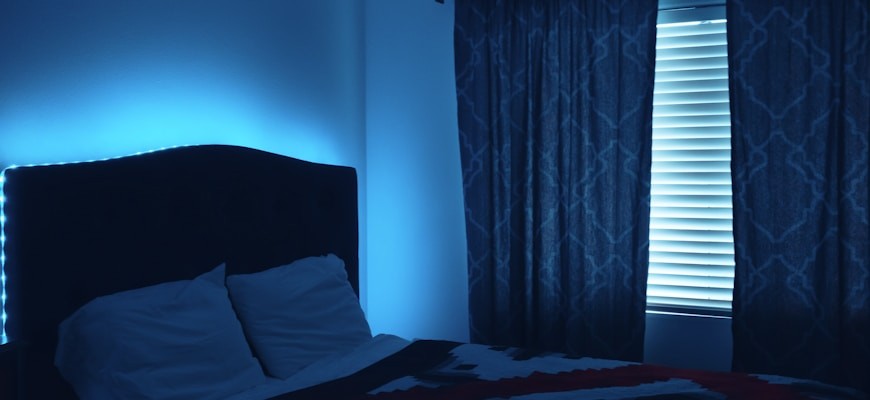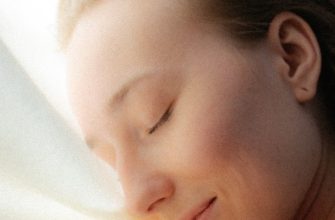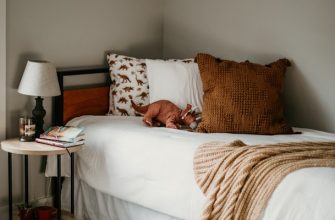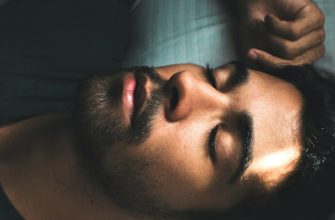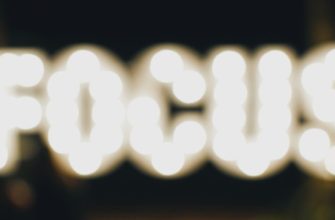- Creating the Perfect Sleep Environment: The Role of Lighting
- How Ambient Light Influences Sleep Quality
- Tips for Optimizing Your Bedroom Atmosphere for Better Sleep
- The Science of Sleep: Understanding Light and Its Effects
- Transforming Your Space: Simple Changes for Improved Rest
- Harnessing Natural and Artificial Light for Enhanced Sleep
Creating the Perfect Sleep Environment: The Role of Lighting
Creating the perfect sleep environment is essential for achieving high-quality rest. One of the most significant factors that influence sleep quality is lighting. Proper lighting can enhance relaxation and signal the body when it is time to wind down. To improve the sleep environment, it is crucial to consider the type, intensity, and timing of light exposure.
- Natural Light: Exposure to natural sunlight during the day helps regulate the body’s circadian rhythm. Aim for at least 30 minutes of outdoor light exposure every day.
- Dim Lighting: As bedtime approaches, it is advisable to reduce light intensity. Soft, warm lighting can create a calming atmosphere conducive to sleep.
- Blue Light Management: Blue light emitted by screens can interfere with melatonin production. Limiting screen time at least one hour before sleep is recommended to enhance sleep quality.
- Smart Lighting: Utilizing smart bulbs that can adjust color temperature and brightness throughout the evening can help mimic natural light patterns, supporting a better sleep environment.
- Light Blocking: Using blackout curtains or eye masks can eliminate unwanted light, creating a dark environment that is ideal for restful sleep.
By optimizing lighting conditions, the chances of achieving restorative sleep significantly increase. The impact of a well-designed lighting strategy on sleep quality cannot be underestimated. Therefore, taking steps to create the perfect sleep environment through effective lighting choices is essential for anyone seeking better rest and rejuvenation.
How Ambient Light Influences Sleep Quality
Ambient light plays a crucial role in determining sleep quality. The presence of natural and artificial light sources can significantly affect the body’s circadian rhythms, which regulate sleep-wake cycles. Exposure to bright light during the evening can hinder the production of melatonin, a hormone essential for restful sleep. Therefore, optimizing lighting conditions in the bedroom is vital for enhancing sleep quality.
- The intensity of ambient light impacts the ability to fall asleep. Dim lighting creates a soothing atmosphere that promotes relaxation.
- Color temperature is another critical factor. Warmer hues, such as soft yellows and reds, can help signal to the brain that it is time to wind down.
- Blocking out external light sources, such as streetlights and electronic devices, is essential for achieving the ideal sleep environment.
- Utilizing blackout curtains can effectively reduce light intrusion, contributing to a deeper and more restorative sleep.
Moreover, the transition from bright daylight to softer evening light should be gradual. This gradual dimming of lights can help the body adjust, facilitating a smoother transition to sleep. Implementing smart lighting solutions that adjust automatically based on the time of day can greatly improve the overall ambiance and enhance sleep quality.
In conclusion, the influence of ambient light on sleep quality cannot be overstated. By optimizing lighting conditions, individuals can create a conducive environment that enhances relaxation, supports melatonin production, and ultimately leads to better sleep. Investing in the right lighting solutions is a fundamental step towards achieving optimal sleep quality.
Tips for Optimizing Your Bedroom Atmosphere for Better Sleep
Creating a serene and inviting atmosphere in the bedroom is essential for enhancing sleep quality. The right conditions can significantly impact relaxation and overall well-being. Implementing effective strategies can transform the bedroom into a tranquil sanctuary, conducive to restorative sleep.
- Lighting Control: Utilize dimmable lights or soft bedside lamps to reduce harsh lighting before bedtime. Opt for warm-toned bulbs to create a calming environment.
- Color Palette: Choose soothing colors for the walls and decor. Shades of blue, green, and neutral tones promote relaxation and tranquility.
- Sound Management: Minimize noise disruptions by using sound machines or white noise apps. Consider earplugs if external sounds are unavoidable.
- Aromatherapy: Incorporate calming scents such as lavender or chamomile through essential oils or scented candles to enhance relaxation.
- Temperature Regulation: Maintain a cool room temperature, ideally between 16-20°C (60-68°F), to create a comfortable sleep environment.
- Clutter-Free Space: Keep the bedroom organized and free from clutter. A tidy space fosters a sense of calm and focus, aiding in better sleep quality.
By implementing these tips into the bedroom setup, individuals can optimize their sleep atmosphere. A well-thought-out environment, with attention to lighting, color, sound, scent, temperature, and organization, significantly enhances the potential for restful sleep. Prioritizing these elements transforms the bedroom into a peaceful retreat, encouraging healthier sleep patterns and improved overall health.
The Science of Sleep: Understanding Light and Its Effects
The quality of sleep is significantly influenced by various environmental factors, with lighting playing a crucial role. Understanding how light affects sleep can help in optimizing conditions for better rest. Light exposure during the day helps regulate the body’s internal clock, known as the circadian rhythm. This natural rhythm dictates sleep patterns, hormone release, and body temperature, which are all vital for achieving restorative sleep.
During daytime, exposure to natural light is essential. Sunlight boosts serotonin production, which can enhance mood and promote alertness. Conversely, inadequate light exposure during the day can lead to poor sleep quality at night. It is important to maximize natural light intake and minimize artificial lighting during the evening to support optimal sleep conditions.
- Morning Light: Exposure to bright light in the morning helps to signal to the body that it is time to wake up, setting a proper tone for the day.
- Evening Darkness: Reducing light exposure in the evening, especially blue light from screens, promotes the release of melatonin, the hormone that regulates sleep.
- Color Temperature: Warmer light tones in the evening can create a calming atmosphere conducive to relaxation and sleep readiness.
Furthermore, the type of lighting used in a bedroom can influence sleep quality. Soft, dimmable lights are preferable as they help create a tranquil environment. Avoiding harsh overhead lighting in favor of lamps with adjustable brightness can contribute to a more restful ambiance.
In addition to light management, incorporating blackout curtains can effectively block external light sources, further enhancing the sleep environment. Sound also plays a role; combining soft lighting with calming sounds can create an ideal atmosphere for sleep.
In summary, understanding the science of light and its effects on sleep can lead to significant improvements in sleep quality. By optimizing lighting conditions, individuals can enhance their overall sleep experience, leading to better health and well-being.
Transforming Your Space: Simple Changes for Improved Rest
Creating a peaceful sleeping environment is essential for enhancing sleep quality. One effective way to achieve this is through thoughtful adjustments to lighting and ambiance. The right lighting can significantly impact mood and comfort, leading to better rest. A well-optimized space encourages relaxation and sets the stage for a restful night.
- Dim the Lights: Utilize soft, warm lighting in the evenings. This can help signal to the body that it’s time to wind down, promoting restful sleep.
- Use Blackout Curtains: Light-blocking window treatments prevent outside disturbances, creating a dark environment that is conducive to sleep.
- Incorporate Natural Elements: Adding plants or natural materials can enhance the atmosphere, making the space feel calm and inviting, thus improving overall sleep quality.
- Control Room Temperature: Maintain a comfortable temperature, ideally between 60°F and 67°F (15°C to 19°C), to foster a better sleeping experience.
In addition to the adjustments above, consider incorporating calming scents such as lavender or chamomile. These fragrances can help create a soothing atmosphere, making it easier to transition into sleep. The integration of these sensory elements not only enhances the environment but also promotes relaxation, leading to improved rest.
By transforming the space with these simple changes, individuals can create an optimized sleeping environment that significantly contributes to better sleep quality. The combination of appropriate lighting, temperature control, and a tranquil atmosphere serves as a foundation for restorative rest, ultimately enhancing overall well-being.
Harnessing Natural and Artificial Light for Enhanced Sleep
Optimizing lighting conditions plays a crucial role in enhancing sleep quality. Both natural and artificial light significantly influence the body’s circadian rhythms, which regulate sleep patterns. Understanding how to harness these types of light can lead to better rest and improved overall well-being.
Natural light exposure during the day helps to regulate the body’s internal clock. Morning sunlight can boost serotonin production, promoting alertness and energy. In contrast, reduced exposure to natural light during the evening signals the body to prepare for sleep. To maximize the benefits of natural light, consider the following:
- Open curtains and blinds to allow ample daylight into living spaces.
- Spend time outdoors, especially in the morning, to soak up sunlight.
- Utilize light-colored decor to reflect natural light around the room.
Artificial lighting, on the other hand, can disrupt sleep if not managed properly. Blue light emitted from screens and certain types of LED bulbs can interfere with melatonin production, making it harder to fall asleep. To mitigate the impact of artificial light, consider these strategies:
- Limit screen time at least an hour before bedtime to reduce blue light exposure.
- Use warm-colored light bulbs in the evening to create a calming atmosphere.
- Incorporate dimmable lights to adjust the brightness according to the time of day.
By skillfully combining both natural and artificial lighting techniques, a more conducive sleep environment can be created. The key is to embrace the benefits of daylight while minimizing exposure to disruptive artificial light in the evening. This balanced approach not only enhances sleep quality but also contributes to overall health and vitality.
